Planting a lawn in the fall: terms and rules for sowing lawn grass before winter
So you decided to cover your garden with a green carpet. Indeed, what could be more beautiful than your own lawn, which will become a real decoration of your site. However, in order for the lawn to grow even and you are completely satisfied with the result, first you need to take into account several important nuances.
Next, you will learn how to properly plant a lawn in the fall, namely how to prepare the site, when and how to sow seeds.
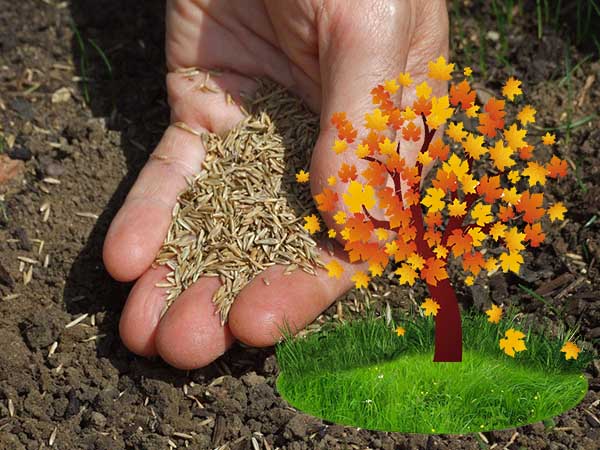
Content
When to sow the lawn in the fall, in what month: timing
Despite the fact that the best time to plant a lawn is still considered Spring, early autumn is also suitable for laying a lawn.
Moreover, the autumn planting of the lawn, as a rule, begins to be engaged in from the end of August (we are talking about regions with a short summer, where August is usually called the autumn month).
The fact is that before stable frosts, the seeds must sprout and root well, which will take at least a month, or even one and a half.
Thus, the optimal time for sowing a lawn in the fall in the Middle Lane (Moscow region) is the end of August and mid-September.
Interesting! Some gardeners practice sub-winter sowing, planting seeds after the first night frosts have passed.
When can a lawn be sown in the fall and what you need to consider
- If your site is on a slope, then autumn (sub-winter) sowing will most likely not work for you (with a slope of more than 3 degrees).
Melted water can simply wash seeds out of the soil.
- The same applies to low-lying areas, because they are highly likely to get wet.
- Of course, no one should walk on the sown area (animals, people).
It is very easy to break the integrity of the surface of the future lawn.
- When cleaning paths from snow, it must be evenly distributed over the surface, in no case pouring large snowdrifts.
- It is also very important to timely and accurately remove the foliage falling on the lawn.
All seedlings will die under a dense carpet of leaves.
- And in the spring it is imperative to roll the lawn with a garden roller.
Preparation of the site and soil for sowing a lawn before winter
In fact, lawn planting takes place in 2 stages:
- Site preparation: cleaning it, digging and improving the soil structure, leveling and tamping.
Note! It is obvious that it is necessary to lay underground irrigation at the stage of soil preparation.
- Sowing seeds and their embedding (+ tamping and dusting).
Important! At the same time, it is very desirable that there is a short interval of 1-2 weeks between digging and tamping (for soil shrinkage).
Cleaning the site from debris and weeds
So, the initial preparation of the site includes work on its cleaning up all kinds of garbage (stones, branches, stumps), and weed removal.
It is imperative to remove weeds along with the roots, doing it manually or with the help of special tools, as well as by applying herbicides. In this case, special attention should be paid to dandelion control.
By the way! You can get rid of weeds and roots while digging the soil.
Drainage layer (if the soil is heavy)
If you have sufficiently clayey soil (medium and heavy loams) or on a garden plot selected for sowing a lawn (for example, in a lowland) moisture often stagnates (spring melt water), then you definitely need to do drainage, and even double is better:
- bottom layer (10-15 cm) - pour coarse gravel or broken brick;
- the top (at least 5 centimeters, optimally 5-10 cm) is sand (preferably coarse).
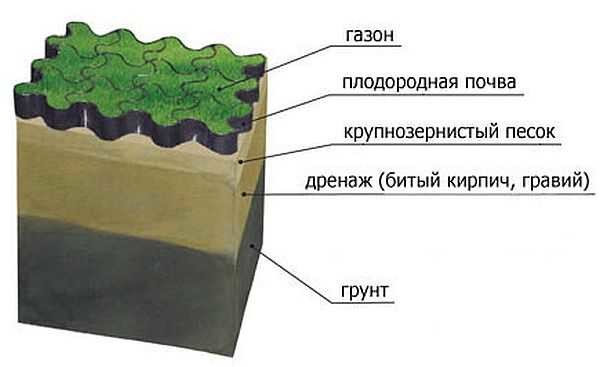
Foundation creation (embankment or digging of a fertile soil layer)
If you have sandy soil or light loam, then no you do not need to do a drainage layer, but you can go directly to establishing the foundation.
So, now it is necessary to fill or loosen at least 10, and preferably 15-20 centimeters a layer of fertile soil.
- What kind of soil mixture is right?
Ideally, this should be enough loose soil, eg, sandy loam or any black soil... If your soil is loamy, then its structure can be improved with sand.
Important! Wherein do not add organic matter (humus, compost) for loosening, as it decomposes over time and the lawn, accordingly, sags.
Of course, there is no point in planting a lawn on clay (medium or heavy loam), peat or clean sand... You simply won't get anything.
What does it mean to "fill or loosen a 15-20 centimeter layer of fertile soil"?
You need dig (loosen) your soil to a depth of 15-20 cm (half a shovel bayonet) and add sand (black earth) to it.
Think! In general, you can immediately apply mineral fertilizers (it is optimal to buy special "for the lawn"), embedding them in the soil even during digging (loosening). But you can feed it already after the grass turns green.
To dig (cultivate) the land, you will need cultivator (faster and easier, but more expensive) or shovel (longer, more labor-intensive, but more economical).
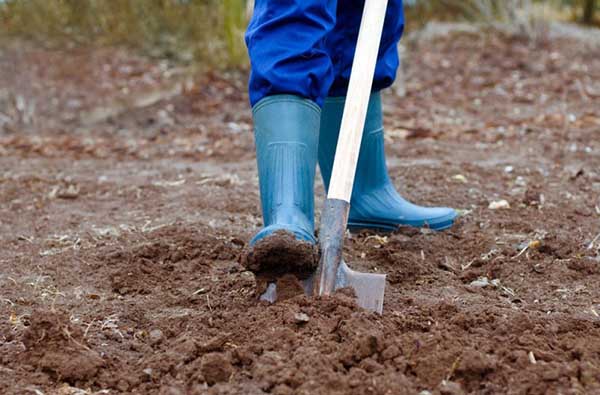
Of course, if you have completely unsuitable soil (clay)then you can try take out 15 cm of soil and replace it with a new fertile one (difficult and time-consuming) or pour on top (a little easier).
After digging and loosening it is recommended a couple of times pour water on the groundso that she initially settled and thickened (there were no voids inside).
Surface leveling and compaction
The final stage of soil preparation for sowing a lawn is to level and tamp the surface of the fertile layer.
Why is this needed? It's simple: if the ground is loose, then after sowing and watering (rains), irregularities will begin to appear on your site - bumps and pits.
To do this, you need:
- for the initial leveling - a rake;
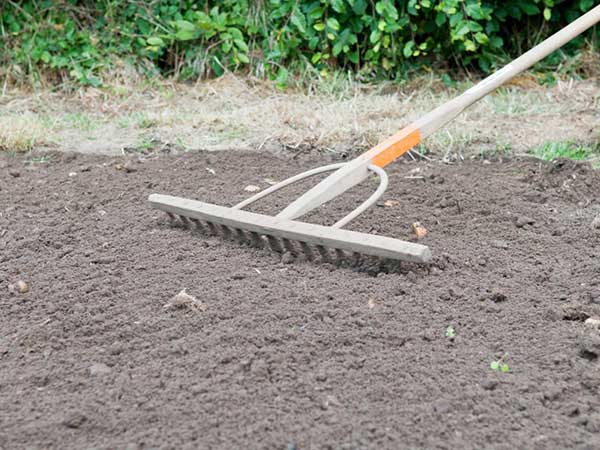
- for compacting and tamping - a garden roller.
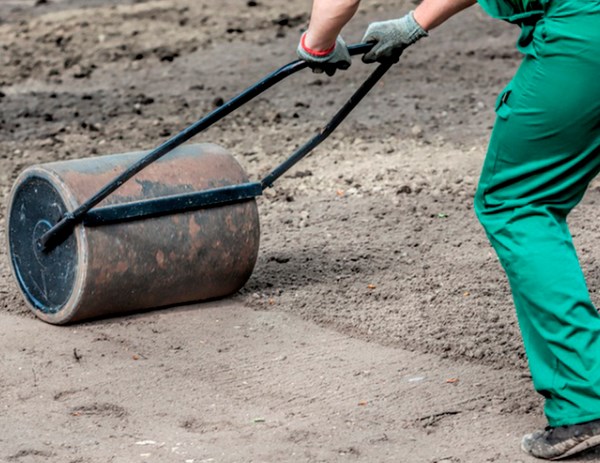
How to replace a garden roller?
- Gas cylinder.
- Barrel.
- A roll of roofing material.
- Wide diameter pipe.
Interesting! And some just trample underfoot (sneakers).
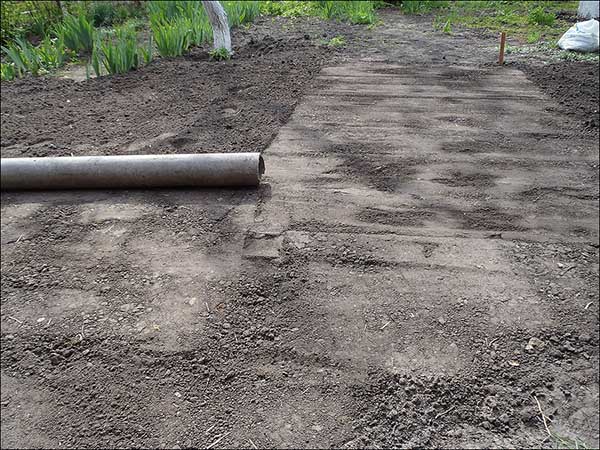
Thus, you must achieve an absolutely smooth, so to speak, perfectly flat and tamped surface.
Important! Naturally, the surface should not be no pits and dips, otherwise, these parts of the lawn are simply wet in the winter-spring period.
How to sow a lawn correctly in autumn
After you have perfectly flattened and tamped the soil, you can sow lawn grass seeds right away.
Choose a fine day for planting, the weather should be clear, dry and calm.
Lawn mix selection
As a rule, the following herbs are mainly used to create a lawn:
- bluegrass - for the most sunny areas;
- fescue - for more shady (partial shade);
- the rest (the same ryegrass).
By the way! Ryegrass is the fastest growing lawn grass.
Therefore, it is most often included in the lawn mixture (for example, bluegrass and ryegrass or fescue and ryegrass).
Direct seeding and incorporation
Before sowing, you need to lightly loosen the surface and cut with a rake (preferably fan-shaped, but you can also use ordinary ones) grooves for seeds. Then follows the maximum distribute seeds evenly on the surface of the soil, doing it in one of 2 ways:
- With your hands (if the sowing area is small). You need to scatter the seeds in front of you, gradually stepping back, going first along, and then across the site.
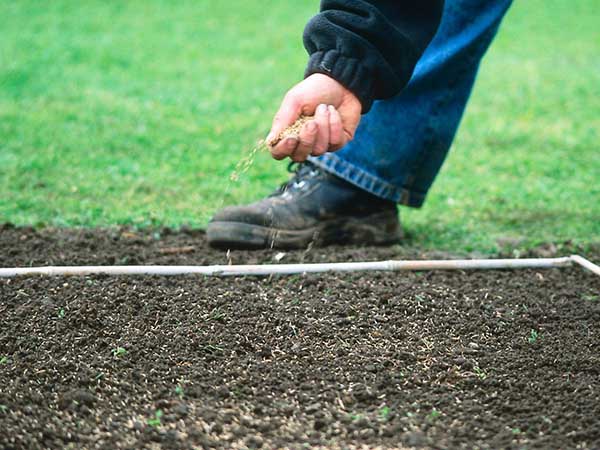
How many seeds do you need?
This should be indicated on the package (as a rule, about 30-40 grams per 1 square meter), but often it only says that "the seeds should be evenly distributed over the sown area."
Wherein they sow a little more before winter (than in spring).
- With a seeder (if the area is large and / or you have extra money for a special tool).
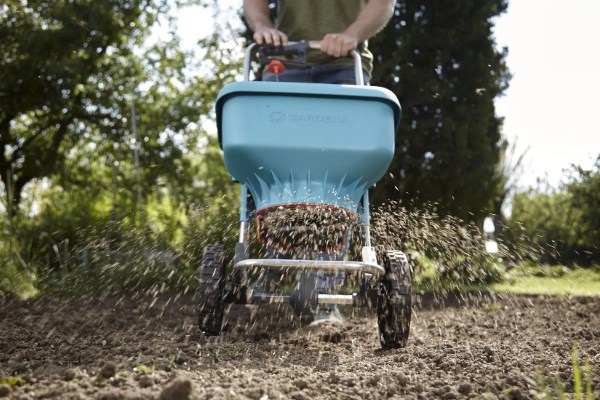
After the seeds are sown, they should be close up with a rake (you can use ordinary ones, or better fanned).
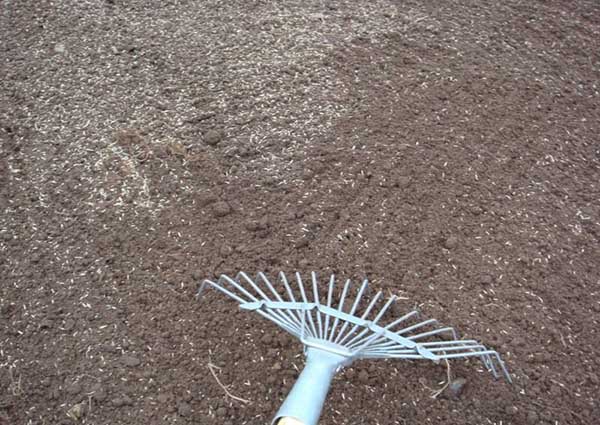
And then again lightly roll with a garden roller.
Alternatively, you can also additionally sprinkle the seeds with a thin (1 cm) layer of fertile soil or even better sand.
Why better sand?
It's simple, on the sand after the moisture has dried no crust forms (as opposed to land).
Note! If you do not tamp and / or sprinkle the seeds with a 1 cm layer of sand or earth, then ants will take away a significant part of the seeds or pecked by birds, which ultimately results in a bunch of small bald spots.
The last stage of sowing is watering (a hose with a special nozzle - a fine spray).
Post-plant care
It's obvious that the lawn can only grow in wet ground, which means that you need to monitor humidity and periodically watering, if necessary (in other words, if autumn does not spoil you with regular rainfall).
By the way! In general, the main advantage of the autumn planting of the lawn is that during this period it often rains, in other words, the most favorable weather conditions are formed for the early germination and rooting of the lawn.
After the lawn grows back, it will be possible to mow it once (so that it leaves no more than 4-6 cm in winter) and then fertilize it.
What to do if the lawn has sprouted in "shreds" (many "bald spots")?
All "bare" areas must be loosened with a rake, sowed seeds and sprinkled with soil, and then watered.
In the future, the lawn will require correct and timely care from you, in particular regular watering and haircuts.
Advice! The site has 2 separate detailed articles on how to care for your lawn in spring (after winter) and in autumn (how to prepare for wintering).
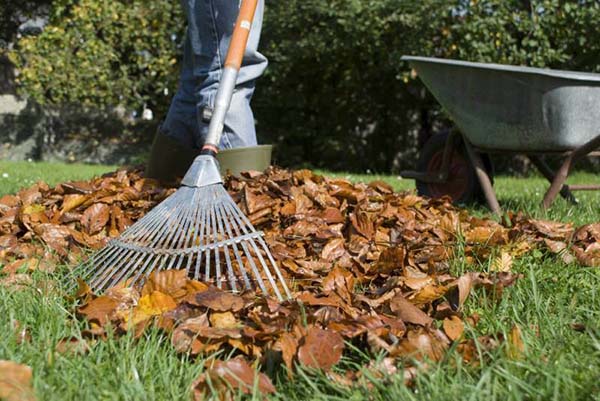
Video: creating a lawn in the fall

